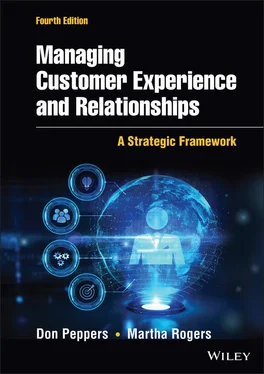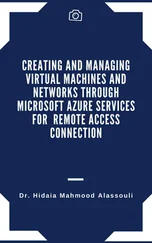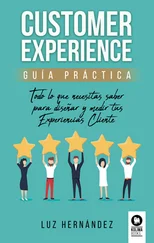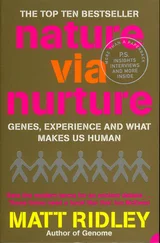2 2 Priyanka Meena and Praveen Sahu, “Customer Relationship Management Research from 2000 to 2020: An Academic Literature Review and Classification,” Vision 25, no. 2 (June 2021): 136–58, https://doi.org/10.1177/0972262920984550; Ju-Yeon Lee, Shrihari Sridhar, Conor Henderson, and Robert W. Palmatier, “Effect of Customer-Centric Structure on Firm Performance,” Marketing Science Institute Working Paper Series, Report No. 12–111, available at https://www.msi.org/wp-content/uploads/2020/06/MSI_Report_12-1111.pdf, accessed August 17, 2021; Sunil Gupta and Donald R. Lehmann, Managing Customers as Investments (Philadelphia: Wharton School Publishing, 2005); Robert S. Kaplan, “A Balanced Scorecard Approach to Measure Customer Profitability,” Harvard Business School's Working Knowledge Web site, August 8, 2005, available at: https://hbswk.hbs.edu/item/a-balanced-scorecard-approach-to-measure-customer-profitability, accessed August 17, 2021; Don Peppers and Martha Rogers, The One to One Future (New York: Doubleday Books, 1993); and Fred Reichheld and Rob Markey, The Ultimate Question 2.0: How Net Promoter Companies Thrive in a Customer Driven World (Cambridge, MA: Harvard Business Review Press, 2011).
3 3 Thanks to the SalesForce Marketing Cloud website for inspiring many of these examples; “Marketing Cloud Customer Stories,” Salesforce, available at https://www.salesforce.com/products/marketing-cloud/customer-stories/, accessed April 14, 2021.
4 4 Barton Goldenberg, “CXM: Give Your Customers the Experiences They Want,” CRM Magazine 21, no. 4 (April 2017): 6; Ranjay Gulati, Reorganize for Resilience: Putting Customers at the Center of Your Business (Cambridge, MA: Harvard University Press, 2010). Also see Don Peppers and Martha Rogers, Ph.D., One to One B2B (New York: Doubleday Broadway Books, 2001).
5 5 Colin Dwyer, “Barnes & Noble Set to Be Sold to Elliott Management for about $683 Million,” NPR, June 7, 2019, available at https://www.npr.org/2019/06/07/730638739/barnes-noble-set-to-be-sold-to-elliott-management-for-about-683-million, accessed August 17, 2021; “ Amazon.com, Inc. Common Stock (AMZN),” Nasdaq, available at https://www.nasdaq.com/market-activity/stocks/amzn, accessed August 17, 2021.
6 6 Bernd W. Wirtz and Peter Daiser, “Business Model Development: A Customer-Oriented Perspective,” Journal of Business Models 6, no. 3 (2018): pp. 24-44; Srividya Sridharan, “Evolve Your Approach to Acquisition and Retention,” Forrester Research, Inc., December 12, 2012, available at www.forrester.com.
7 7 Marco Bertini and John T. Gourville, “Pricing to Create Shared Value,” Harvard Business Review, June 2012, available at https://hbr.org/2012/06/pricing-to-create-shared-value, accessed August 17, 2021. See also Don Peppers and Martha Rogers, Ph.D., The One to One Manager (New York: Doubleday, 1999).
8 8 B. Joseph Pine II, Don Peppers, and Martha Rogers, Ph.D., “Do You Want to Keep Your Customers Forever?” Harvard Business Review 73, no. 2 (March–April 1995): 103–114.
9 9 B. Joseph Pine II, Don Peppers, and Martha Rogers, Ph.D., “Do You Want to Keep Your Customers Forever?”
10 10 Steve Blank, “Why the Lean Startup Changes Everything,” Harvard Business Review, May 2013, available at https://hbr.org/2013/05/why-the-lean-start-up-changes-everything, accessed August 17, 2021; Katherine Lemon, Don Peppers, and Martha Rogers, Ph.D., “Managing the Customer Lifetime Value: The Role of Learning Relationships,” working paper.
11 11 David C. Edelman and Marc Singer, “Competing on Customer Journeys,” Harvard Business Review 93, no. 11 (November 2015): 88–100.
CHAPTER 2 Treat Different Customers Differently: How Learning Relationships Lead to Better Experiences and Higher Profit
Things have never been more like they are today in history.
—Dwight D. Eisenhower
Enterprises that foster relationships with individual customers pave a path to profitability. Thus, a customer-strategy enterpriseseeks to organize all its value-creating activities around individual customers, treating different customers differently, so as to treat each customer more relevantly, with the knowledge that by doing so the enterprise will also enjoy more profit for itself. For most companies, the problem is that the metrics, reporting structures, and processes that operate well in terms of operating a product-centric enterprise conflict with what is required to operate in a customer-centricway.
FOCUS ON RELATIONSHIP EQUITY
When it comes to customers, businesses are shifting their focus from product sales transactions to relationship equity. Most soon recognize that they simply do not know the full extent of their profitability by customer for a variety of reasons. 1
But they also know that not all customers are equal. Some are not worth the time or financial investment of establishing Learning Relationships, nor are all customers willing to devote the effort required to sustain such a relationship. Enterprises need to decide early on which customers they want to have relationships with, which they do not, and what type of relationships to nurture. (See Chapter 6on customer value differentiation.)
The advantages to the enterprise of growing Learning Relationships with valuable and potentially valuable customers are immense. Because much of what is sold to the customer may be customizedto his precise needs, the enterprise can, for example, potentially charge a premium (as the customer may be less price sensitive to customized products and services in exchange for convenience or specificity) and increase its profit margin. 2 The product or service is worth more to the customer because he has helped shape and mold it to his own specifications. The product or service, in essence, has become decommoditizedand is now uniquely valuable to this particular customer.
THE STRATEGY: TREAT DIFFERENT CUSTOMERS DIFFERENTLY (TDCD)
Managing customer relationships effectively is a practice not limited to products. When establishing interactiveLearning Relationships with valuable customers, customer-strategy enterprises remember a customer's specific needs for the basic product but also the goods, services, and communications that surround the product, such as how the customer would prefer to be invoiced or how the product should be packaged. Even an enterprise that sells a commodity-like product or service can think of it as a bundle of ancillary services, delivery times, invoicing schedules, personalized reminders and updates, and other features that are rarely commodities. The key is for the enterprise to focus on customizing to each individual customer's needs. A teenager in California received a text from her wireless phone service suggesting her parents could save money if she texted “4040” in an offer to switch her to a cell phone plan that was a better fit for her and the way she actually uses the service. She was so impressed she made a point of telling us about it. And of course, she told all her friends at school—and on TikTok, Snapchat, and Instagram. The coverage, the hardware, the central customer service, and the brand all remained the same. But the customer experience, based on actual usage interactionwith the customer—information not available to competitors—improved the customer relationship, increased loyalty and lifetime valueof the customer, and positively influenced other customers as well.
As other chapters in this book will demonstrate, a customer-centric business strategy can be a highly measurable process for increasing enterprise profitability and shareholder value. The foundation for growing a profitable customer-strategy enterprise lies in establishing stronger relationships with individual customers, paving a path to profitability by focusing on the different experiences of individual customers and fostering stronger relationships with them over time. The challenge to be considered throughout this text is understanding how best to establish these relationships, optimize them, and create more value from customers. Learning Relationships provide a ready path for generating long-term, competitively strong customer value.
Читать дальше












